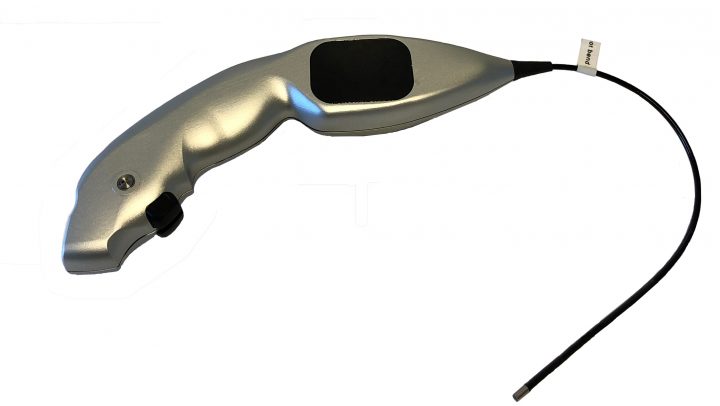Context:
Our customer, a visualization and technology company, had a battery-powered flexible videoscope used for law enforcement/security purposes. They discovered a market for a similar device in the medical ENT space. They wanted to have their current device designed to a medical standard and have the device integrate with EMR systems. The endoscope needed to be portable, stream video via Wi-Fi and record video for the Doctor’s review. They were confident in Bay Computer Associates ability as we could do everything from the firmware, hardware and the PC app.
Solution:
In order to facilitate the video feed from the portable device to both a display screen and image/video storage, our engineers designed a system around two custom units, each containing a fully-fledged Linux SoC (System on Chip) and multiple PCBs, and a custom PC application.
The first unit, the portable endoscope, contained circuitry to capture video from the 0.005 in^2 camera and package it up for streaming wirelessly to the base unit. A Wi-Fi direct module was chosen based on the target transmission distance of at least 30 feet line-of-sight, as well as the very low latency and strict data security requirements. Additionally, the endoscope needed to fully submersible for rigorous cleaning cycles after each use. Based on this requirement, we had to include both wireless charging and the ability to send firmware updates via Wi-Fi to the endoscope.
For the processor box, we used combination of a Windows single board computer and a custom Linux SoC board to receive, process, store, and display the video feed. The Windows single board computer allows for use of a custom PC app and a familiar user interface for the doctor. The custom Linux SoC board processes the streaming video received over Wi-Fi direct from the endoscope and overlays it onto the screen as a picture-in-picture window when an exam is in session.
The PC application handles the pairing of the wireless device, the display of the stream, and the storage of the image/video files. Based on security requirements, it is vital that the doctor knows that they are looking at a feed from the correct endoscope; to facilitate this, the pairing process includes a unique ID that the doctor confirms to ensure that the intended endoscope is used. The application also tells the Linux SoC where to place the picture-in-picture feed so that the video feed is correctly positioned on screen. Finally, the application saves off an image or starts/stops the saving of a video depending on which of two buttons were pressed on the wireless endoscope.
Designing the electronics to support a complex and powerful Linux environment, as well as rapid wireless charging, all to fit within a battery powered, handheld device presented notable challenges for our electronics team. Establishing a communication protocol between a custom Linux PCB and Windows PC in the processor box required tight firmware and software integration. Between the charging dock, endoscope, and processor box, we designed 8 custom PCBs and firmware to run on them. The device made it through FDA with BCA’s documentation set and guidance.

